From Pol Pot to ISIS: The blood never dried - Article by John Pilger
 Following the ISIS outrages in Beirut and Paris, John Pilger updates this prescient essay on the root causes of terrorism and what we can do about it. In transmitting President Richard Nixon's orders for a "massive" bombing of Cambodia in 1969, Henry Kissinger said, "Anything that flies on everything that moves". As Barack Obama wages his seventh war against the Muslim world since he was awarded the Nobel Peace Prize, and Francois Hollande promises a "merciless" attack on the rubble of Syria, the orchestrated hysteria and lies make one almost nostalgic for Kissinger's murderous honesty.
Following the ISIS outrages in Beirut and Paris, John Pilger updates this prescient essay on the root causes of terrorism and what we can do about it. In transmitting President Richard Nixon's orders for a "massive" bombing of Cambodia in 1969, Henry Kissinger said, "Anything that flies on everything that moves". As Barack Obama wages his seventh war against the Muslim world since he was awarded the Nobel Peace Prize, and Francois Hollande promises a "merciless" attack on the rubble of Syria, the orchestrated hysteria and lies make one almost nostalgic for Kissinger's murderous honesty.
As a witness to the human consequences of aerial savagery - including the beheading of victims, their parts festooning trees and fields - I am not surprised by the disregard of memory and history, yet again. A telling example is the rise to power of Pol Pot and his Khmer Rouge, who had much in common with today's Islamic State in Iraq and Syria (ISIS). They, too, were ruthless medievalists who began as a small sect. They, too, were the product of an American-made apocalypse, this time in Asia. Article first published on 16 November 2015 at http://johnpilger.com/articles/from-pol-pot-to-isis-the-blood-never-dried
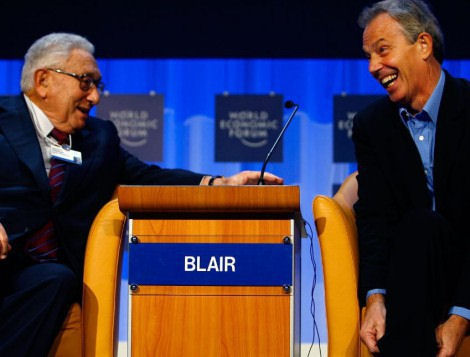
According to Pol Pot, his movement had consisted of "fewer than 5,000 poorly armed guerrillas uncertain about their strategy, tactics, loyalty and leaders". Once Nixon's and Kissinger's B-52 bombers had gone to work as part of "Operation Menu", the west's ultimate demon could not believe his luck. The Americans dropped the equivalent of five Hiroshimas on rural Cambodia during 1969-73. They leveled village after village, returning to bomb the rubble and corpses. The craters left giant necklaces of carnage, still visible from the air. The terror was unimaginable. A former Khmer Rouge official described how the survivors "froze up and they would wander around mute for three or four days. Terrified and half-crazy, the people were ready to believe what they were told... That was what made it so easy for the Khmer Rouge to win the people over." A Finnish Government Commission of Inquiry estimated that 600,000 Cambodians died in the ensuing civil war and described the bombing as the "first stage in a decade of genocide". What Nixon and Kissinger began, Pol Pot, their beneficiary, completed. Under their bombs, the Khmer Rouge grew to a formidable army of 200,000.
ISIS has a similar past and present. By most scholarly measure, Bush and Blair's invasion of Iraq in 2003 led to the deaths of at least 700,000 people - in a country that had no history of jihadism. The Kurds had done territorial and political deals; Sunni and Shia had class and sectarian differences, but they were at peace; intermarriage was common. Three years before the invasion, I drove the length of Iraq without fear. On the way I met people proud, above all, to be Iraqis, the heirs of a civilization that seemed, for them, a presence.
Bush and Blair blew all this to bits. Iraq is now a nest of jihadism. Al-Qaeda - like Pol Pot's "jihadists" - seized the opportunity provided by the onslaught of 'Shock and Awe' and the civil war that followed. "Rebel" Syria offered even greater rewards, with CIA and Gulf state ratlines of weapons, logistics and money running through Turkey. The arrival of foreign recruits was inevitable. A former British ambassador, Oliver Miles, wrote, "The [Cameron] government seems to be following the example of Tony Blair, who ignored consistent advice from the Foreign Office, MI5 and MI6 that our Middle East policy - and in particular our Middle East wars - had been a principal driver in the recruitment of Muslims in Britain for terrorism here."
ISIS is the progeny of those in Washington, London and Paris who, in conspiring to destroy Iraq, Syria and Libya, committed an epic crime against humanity. Like Pol Pot and the Khmer Rouge, ISIS are the mutations of a western state terror dispensed by a venal imperial elite undeterred by the consequences of actions taken at great remove in distance and culture. Their culpability is unmentionable in "our" societies, making accomplices of those who suppress this critical truth.
It is 23 years since a holocaust enveloped Iraq, immediately after the first Gulf War, when the US and Britain hijacked the United Nations Security Council and imposed punitive "sanctions" on the Iraqi population - ironically, reinforcing the domestic authority of Saddam Hussein. It was like a medieval siege. Almost everything that sustained a modern state was, in the jargon, "blocked" - from chlorine for making the water supply safe to school pencils, parts for X-ray machines, common painkillers and drugs to combat previously unknown cancers carried in the dust from the southern battlefields contaminated with Depleted Uranium. Just before Christmas 1999, the Department of Trade and Industry in London restricted the export of vaccines meant to protect Iraqi children against diphtheria and yellow fever. Kim Howells, parliamentary Under-Secretary of State in the Blair government, explained why. "The children's vaccines", he said, "were capable of being used in weapons of mass destruction". The British Government could get away with such an outrage because media reporting of Iraq - much of it manipulated by the Foreign Office - blamed Saddam Hussein for everything.
Under a bogus "humanitarian" Oil for Food Programme, $100 was allotted for each Iraqi to live on for a year. This figure had to pay for the entire society's infrastructure and essential services, such as power and water. "Imagine," the UN Assistant Secretary General, Hans Von Sponeck, told me, "setting that pittance against the lack of clean water, and the fact that the majority of sick people cannot afford treatment, and the sheer trauma of getting from day to day, and you have a glimpse of the nightmare. And make no mistake, this is deliberate. I have not in the past wanted to use the word genocide, but now it is unavoidable." Disgusted, Von Sponeck resigned as UN Humanitarian Co-ordinator in Iraq. His predecessor, Denis Halliday, an equally distinguished senior UN official, had also resigned. "I was instructed," Halliday said, "to implement a policy that satisfies the definition of genocide: a deliberate policy that has effectively killed well over a million individuals, children and adults."
A study by the United Nations Children's Fund, Unicef, found that between 1991 and 1998, the height of the blockade, there were 500,000 "excess" deaths of Iraqi infants under the age of five. An American TV reporter put this to Madeleine Albright, US Ambassador to the United Nations, asking her, "Is the price worth it?" Albright replied, "We think the price is worth it."
In 2007, the senior British official responsible for the sanctions, Carne Ross, known as "Mr. Iraq", told a parliamentary selection committee, "[The US and UK governments] effectively denied the entire population a means to live." When I interviewed Carne Ross three years later, he was consumed by regret and contrition. "I feel ashamed," he said. He is today a rare truth-teller of how governments deceive and how a compliant media plays a critical role in disseminating and maintaining the deception. "We would feed [journalists] factoids of sanitised intelligence," he said, "or we'd freeze them out." Last year, a not untypical headline in the Guardian read: "Faced with the horror of Isis we must act." The "we must act" is a ghost risen, a warning of the suppression of informed memory, facts, lessons learned and regrets or shame. The author of the article was Peter Hain, the former Foreign Office minister responsible for Iraq under Blair. In 1998, when Denis Halliday revealed the extent of the suffering in Iraq for which the Blair Government shared primary responsibility, Hain abused him on the BBC's Newsnight as an "apologist for Saddam". In 2003, Hain backed Blair's invasion of stricken Iraq on the basis of transparent lies. At a subsequent Labour Party conference, he dismissed the invasion as a "fringe issue".
Here was Hain demanding "air strikes, drones, military equipment and other support" for those "facing genocide" in Iraq and Syria. This will further "the imperative of a political solution". The day Hain's article appeared, Denis Halliday and Hans Von Sponeck happened to be in London and came to visit me. They were not shocked by the lethal hypocrisy of a politician, but lamented the enduring, almost inexplicable absence of intelligent diplomacy in negotiating a semblance of truce. Across the world, from Northern Ireland to Nepal, those regarding each other as terrorists and heretics have faced each other across a table. Why not now in Iraq and Syria? Instead, there is a vapid, almost sociopathic verboseness from Cameron, Hollande, Obama and their "coalition of the willing" as they prescribe more violence delivered from 30,000 feet on places where the blood of previous adventures never dried. They seem to relish their own violence and stupidityso much they want it to overthrow their one potentially valuable ally, the government in Syria.
This is nothing new, as the following leaked UK-US intelligence file illustrates:
"In order to facilitate the action of liberative [sic] forces... a special effort should be made to eliminate certain key individuals [and] to proceed with internal disturbances in Syria. CIA is prepared, and SIS (MI6) will attempt to mount minor sabotage and coup de main [sic] incidents within Syria, working through contacts with individuals... a necessary degree of fear... frontier and [staged] border clashes [will] provide a pretext for intervention... the CIA and SIS should use... capabilities in both psychological and action fields to augment tension."
That was written in 1957, although it could have been written yesterday. In the imperial world, nothing essentially changes. In 2013, the former French Foreign Minister Roland Dumas revealed that "two years before the Arab spring", he was told in London that a war on Syria was planned. "I am going to tell you something," he said in an interview with the French TV channel LPC, "I was in England two years before the violence in Syria on other business. I met top British officials, who confessed to me that they were preparing something in Syria... Britain was organising an invasion of rebels into Syria. They even asked me, although I was no longer Minister for Foreign Affairs, if I would like to participate... This operation goes way back. It was prepared, preconceived and planned."
The only effective opponents of ISIS are accredited demons of the west - Syria, Iran, Hezbollah and now Russia. The obstacle is Turkey, an "ally" and a member of Nato, which has conspired with the CIA, MI6 and the Gulf medievalists to channel support to the Syrian "rebels", including those now calling themselves ISIS. Supporting Turkey in its long-held ambition for regional dominance by overthrowing the Assad government beckons a major conventional war and the horrific dismemberment of the most ethnically diverse state in the Middle East.
A truce - however difficult to negotiate and achieve - is the only way out of this maze; otherwise, the atrocities in Paris and Beirut will be repeated. Together with a truce, the leading perpetrators and overseers of violence in the Middle East - the Americans and Europeans - must themselves "de-radicalise" and demonstrate a good faith to alienated Muslim communities everywhere, including those at home. There should be an immediate cessation of all shipments of war materials to Israel and recognition of the State of Palestine. The issue of Palestine is the region's most festering open wound, and the oft-stated justification for the rise of Islamic extremism. Osama bin Laden made that clear. Palestine also offers hope. Give justice to the Palestinians and you begin to change the world around them.
More than 40 years ago, the Nixon-Kissinger bombing of Cambodia unleashed a torrent of suffering from which that country has never recovered. The same is true of the Blair-Bush crime in Iraq, and the Nato and "coalition" crimes in Libya and Syria. With impeccable timing, Henry Kissinger's latest self-serving tome has been released with its satirical title, "World Order". In one fawning review, Kissinger is described as a "key shaper of a world order that remained stable for a quarter of a century". Tell that to the people of Cambodia, Vietnam, Laos, Chile, East Timor and all the other victims of his "statecraft". Only when "we" recognise the war criminals in our midst and stop denying ourselves the truth will the blood begin to dry.
Follow John Pilger on twitter @johnpilger

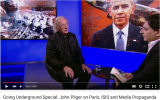 Video inside:One of NATO imperialism's greatest chroniclers, Australian award-winning journalist and filmmaker, John Pilger, tells us how Washington, London and Paris gave birth to ISIS.
Video inside:One of NATO imperialism's greatest chroniclers, Australian award-winning journalist and filmmaker, John Pilger, tells us how Washington, London and Paris gave birth to ISIS.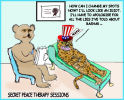 One dramatic impact of the Paris terror attack and the contradictions within the NATO camp and vis a vis the GCC-Turkish Camp, is that all of Putin's worst detractors are queuing up to meet him and seek his words of wisdom ....
One dramatic impact of the Paris terror attack and the contradictions within the NATO camp and vis a vis the GCC-Turkish Camp, is that all of Putin's worst detractors are queuing up to meet him and seek his words of wisdom ....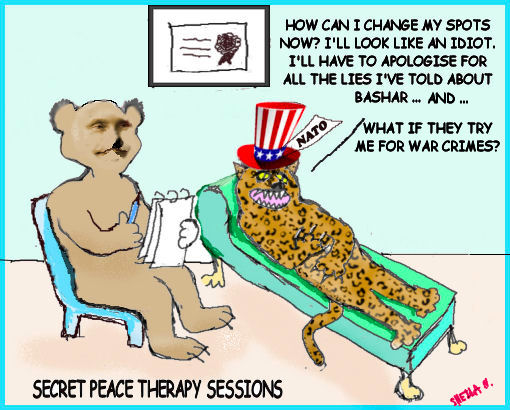 The photos of Putin, Obama with their 2 advisors sitting around a table for just 4 has gone all across the world
The photos of Putin, Obama with their 2 advisors sitting around a table for just 4 has gone all across the world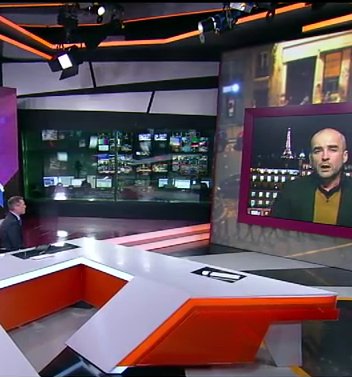
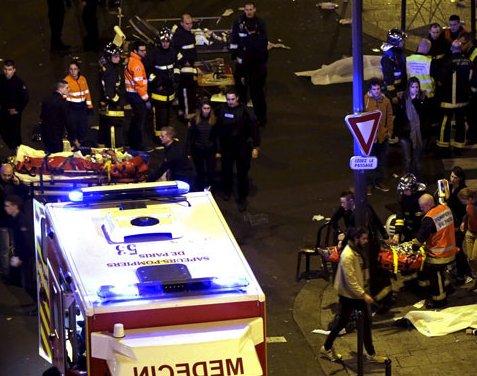
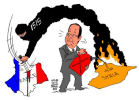 This happened last night:
This happened last night:  Cartoon of the day by
Cartoon of the day by 

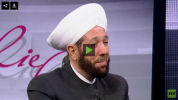 The Middle East conflict - war in Syria and Iraq - has already spilled over. No one is safe from the terrorist attacks, neither East, nor West. Islamic State claims it is still strong, and its ideas are attracting new recruits to replace those killed on the field. Islamic State says the horrors it perpetrates are done in the name Allah - spurring resentment against Muslims all across the globe. Today, we speak to an Islamic scholar, a Grand Mufti of Syria, Ahmad Badreddin Hassoun, to see how the jihadists have twisted the idea of Islam. And does their agenda have anything to do with Islam at all? Republished from
The Middle East conflict - war in Syria and Iraq - has already spilled over. No one is safe from the terrorist attacks, neither East, nor West. Islamic State claims it is still strong, and its ideas are attracting new recruits to replace those killed on the field. Islamic State says the horrors it perpetrates are done in the name Allah - spurring resentment against Muslims all across the globe. Today, we speak to an Islamic scholar, a Grand Mufti of Syria, Ahmad Badreddin Hassoun, to see how the jihadists have twisted the idea of Islam. And does their agenda have anything to do with Islam at all? Republished from 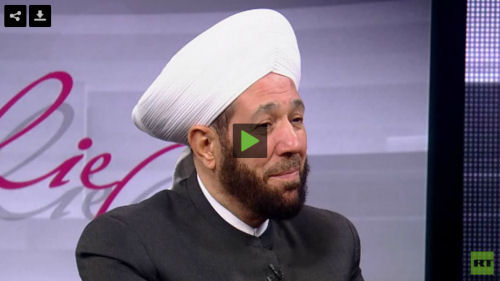
 Confused about what the US and NATO are doing about Syria? Not satisfied with explanations in the mainstream press? Worried that we are promoting more refugees instead of peace in the region? This article gives a very good simple overview of the history and society in Syria, regional religious pressures, recent events and politics, including water theft, background to ISIS, and Turkey's role in opening the refugee floodgates towards Europe. This article represents the text of a talk at a panel on Syrian refugees given by the author in the United States. You can read more of Judy's work on
Confused about what the US and NATO are doing about Syria? Not satisfied with explanations in the mainstream press? Worried that we are promoting more refugees instead of peace in the region? This article gives a very good simple overview of the history and society in Syria, regional religious pressures, recent events and politics, including water theft, background to ISIS, and Turkey's role in opening the refugee floodgates towards Europe. This article represents the text of a talk at a panel on Syrian refugees given by the author in the United States. You can read more of Judy's work on 


 ALEPPO, SYRIA: Since the Russians began helping the Syrian Arab Army to drive ISIS out, a jealous United States, furious that its goal of destroying Syria might yet fail, has spitefully disseminated unconfirmed stories aimed at discrediting Russia's motives and performance. The latest by British Airforce doctor, David Nott, who has also been associated with the charity Syria Relief, alleges that Russia has been purposefully destroying hospitals in Syria.[1] This is ironic when the US itself was so recently caught out bombing a Doctors without Borders manned-hospital in Afghanistan in what almost no-one denies was a blatant war crime.[2] In Syria, the roads supplying food and fuel to Aleppo have only just been reconnected since being cut off by ISIS a few days ago, in attacks that appear to have been facilitated by the US. But ISIS continues to be refueled with fighters who come in via Australia's ally, Turkey, where Muslim Brotherhood supporter, President Erdogan, is seeking to change the laws to make himself a full dictator. Our correspondent in Aleppo, Syria, vents his disgust at these beat-ups.
ALEPPO, SYRIA: Since the Russians began helping the Syrian Arab Army to drive ISIS out, a jealous United States, furious that its goal of destroying Syria might yet fail, has spitefully disseminated unconfirmed stories aimed at discrediting Russia's motives and performance. The latest by British Airforce doctor, David Nott, who has also been associated with the charity Syria Relief, alleges that Russia has been purposefully destroying hospitals in Syria.[1] This is ironic when the US itself was so recently caught out bombing a Doctors without Borders manned-hospital in Afghanistan in what almost no-one denies was a blatant war crime.[2] In Syria, the roads supplying food and fuel to Aleppo have only just been reconnected since being cut off by ISIS a few days ago, in attacks that appear to have been facilitated by the US. But ISIS continues to be refueled with fighters who come in via Australia's ally, Turkey, where Muslim Brotherhood supporter, President Erdogan, is seeking to change the laws to make himself a full dictator. Our correspondent in Aleppo, Syria, vents his disgust at these beat-ups.
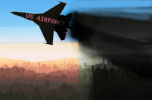 ALEPPO, SYRIA 31 October 2015: The fact that ISIS just seized a critical section the Aleppo-Khanasser highway, cutting off the government’s supply-lines to Aleppo was a major setback. (See reference article, "
ALEPPO, SYRIA 31 October 2015: The fact that ISIS just seized a critical section the Aleppo-Khanasser highway, cutting off the government’s supply-lines to Aleppo was a major setback. (See reference article, "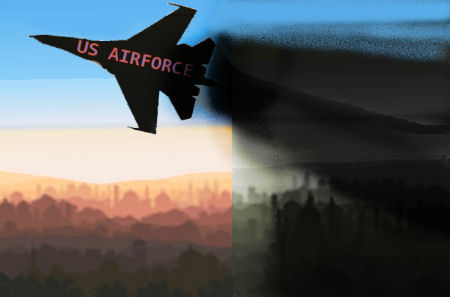 We have limited goods to consume, with limited resources of fuel and water. Prices are jumping higher for almost everything. I hope that situation to end soon.
We have limited goods to consume, with limited resources of fuel and water. Prices are jumping higher for almost everything. I hope that situation to end soon.
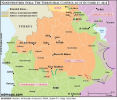 During the last days a large attack on the Syrian government supply line to Aleppo city was carried out by Jabhat al-Nusra (aka al-Qaeda in Syria) and the Islamic State seemingly in coordination with the U.S. military.
During the last days a large attack on the Syrian government supply line to Aleppo city was carried out by Jabhat al-Nusra (aka al-Qaeda in Syria) and the Islamic State seemingly in coordination with the U.S. military.
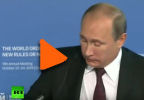 The comments of the Russian Ambassador to the UK are worth noting. On the sidelines of the Valdai Club conference, Russia’s ambassador to the UK, Alexander Yakovenko, said the “only logical way” to explain Britain’s behaviour in Iraq and Syria was a desire that Isis would depose Assad.
The comments of the Russian Ambassador to the UK are worth noting. On the sidelines of the Valdai Club conference, Russia’s ambassador to the UK, Alexander Yakovenko, said the “only logical way” to explain Britain’s behaviour in Iraq and Syria was a desire that Isis would depose Assad.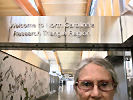 You'd never even guess it after watching today's news, but there really is a huge difference between the monsters who run ISIS and the heroes who defend Palestine.
You'd never even guess it after watching today's news, but there really is a huge difference between the monsters who run ISIS and the heroes who defend Palestine.  Russian President Vladimir Putin gave a speech to the U.N. General Assembly on Monday and said sadly that the West was making an "enormous mistake" by not cooperating with Syrian President Bashar al-Assad in the struggle against ISIS. With regard to US-NATO conduct in Middle Eastern affairs he said,“I cannot help asking those who have caused this situation: Do you realize now what you have done? [...] "[...]It is hypocritical and irresponsible to make loud declarations about the threat of international terrorism while turning a blind eye to the channels of financing and supporting terrorists, including the process of trafficking and illicit trade in oil and arms. It would be equally irresponsible to try to manipulate extremist groups and place them at one's service in order to achieve one's own political goals in the hope of later dealing with them or, in other words, liquidating them. To those who do so, I would like to say — dear sirs, no doubt you are dealing with rough and cruel people, but they're in no way primitive or silly. They are just as clever as you are, and you never know who is manipulating whom. And the recent data on arms transferred to this most moderate opposition is the best proof of it."
Russian President Vladimir Putin gave a speech to the U.N. General Assembly on Monday and said sadly that the West was making an "enormous mistake" by not cooperating with Syrian President Bashar al-Assad in the struggle against ISIS. With regard to US-NATO conduct in Middle Eastern affairs he said,“I cannot help asking those who have caused this situation: Do you realize now what you have done? [...] "[...]It is hypocritical and irresponsible to make loud declarations about the threat of international terrorism while turning a blind eye to the channels of financing and supporting terrorists, including the process of trafficking and illicit trade in oil and arms. It would be equally irresponsible to try to manipulate extremist groups and place them at one's service in order to achieve one's own political goals in the hope of later dealing with them or, in other words, liquidating them. To those who do so, I would like to say — dear sirs, no doubt you are dealing with rough and cruel people, but they're in no way primitive or silly. They are just as clever as you are, and you never know who is manipulating whom. And the recent data on arms transferred to this most moderate opposition is the best proof of it."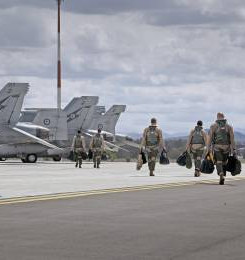
 As has been quite obvious to most of us, the motivation and intention of the whole Western campaign in the Middle East remains the removal of Assad and the subsequent moves against Iran and Russia. IS is a Trojan horse, and the Great Refugee Crisis is the most egregious false flag yet devised to dupe the Western support base of the criminals in power.
As has been quite obvious to most of us, the motivation and intention of the whole Western campaign in the Middle East remains the removal of Assad and the subsequent moves against Iran and Russia. IS is a Trojan horse, and the Great Refugee Crisis is the most egregious false flag yet devised to dupe the Western support base of the criminals in power.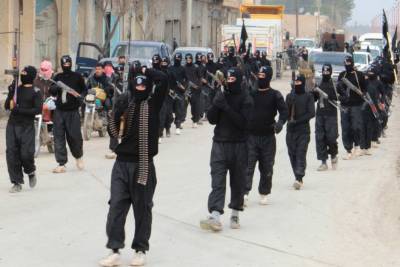
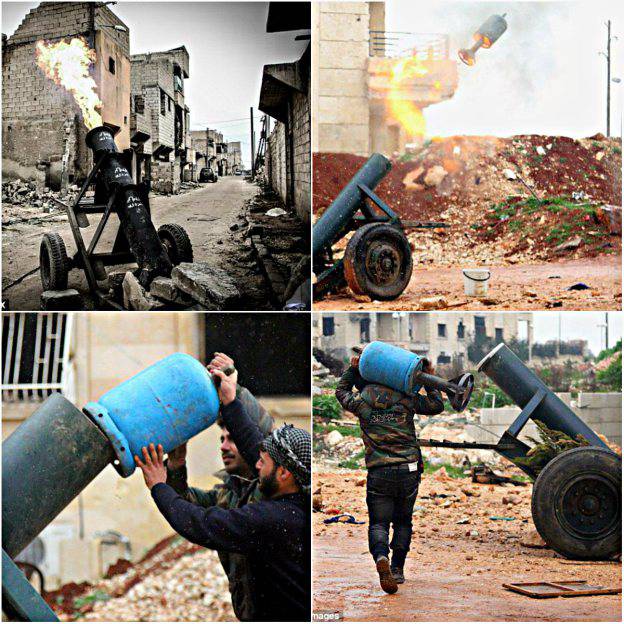
 ALEPPO, SYRIA. 12 July 2015: The water crisis is getting bigger. We are boiling water and cooling it to make it clean to drink. A couple of days ago, the Syrian Government took over all water from the water sellers, who are blackmailing the people and asking expensive price for the water. Government and military officers distributed 500 litres per household for free. This pleased many but annoyed others who wanted more and were ready to pay for it. Yesterday's water prices doubled! Many say that the water (which comes from a dam on the Euphrates, which is under the terrorists' control) reached the Sleimaniyyé sector of the city, where the distribution station is located. So it needs couple of days to reach to our house.
ALEPPO, SYRIA. 12 July 2015: The water crisis is getting bigger. We are boiling water and cooling it to make it clean to drink. A couple of days ago, the Syrian Government took over all water from the water sellers, who are blackmailing the people and asking expensive price for the water. Government and military officers distributed 500 litres per household for free. This pleased many but annoyed others who wanted more and were ready to pay for it. Yesterday's water prices doubled! Many say that the water (which comes from a dam on the Euphrates, which is under the terrorists' control) reached the Sleimaniyyé sector of the city, where the distribution station is located. So it needs couple of days to reach to our house. Water is life! Without it, we can't clean, drink, wash... Without it, everything is pale, dry, dusty, smelly, and thirsty.
Water is life! Without it, we can't clean, drink, wash... Without it, everything is pale, dry, dusty, smelly, and thirsty. Today there is heightened concern and fear among western publics about terrorism. There is no doubt that ISIS, along with other jihadi groups, poses a real (if often exaggerated) threat and have committed many heinous atrocities. But the horrible truth is, that the U.S and their G7 'partners' - that is, the political wing of what today makes up a Transnational Elite (i.e. the political, economic, cultural, elites who reside mainly in the G7 and who collectively manage neoliberal globalization) – are not only responsible for far greater crimes (i.e. millions dead and maimed in wars), but share a large degree of the blame for the rise of these groups in the first place.
Today there is heightened concern and fear among western publics about terrorism. There is no doubt that ISIS, along with other jihadi groups, poses a real (if often exaggerated) threat and have committed many heinous atrocities. But the horrible truth is, that the U.S and their G7 'partners' - that is, the political wing of what today makes up a Transnational Elite (i.e. the political, economic, cultural, elites who reside mainly in the G7 and who collectively manage neoliberal globalization) – are not only responsible for far greater crimes (i.e. millions dead and maimed in wars), but share a large degree of the blame for the rise of these groups in the first place. I thought the issues in this matter would be obvious from the background of the actual event itself and from the Wikipedia link I provided re Zaky's
I thought the issues in this matter would be obvious from the background of the actual event itself and from the Wikipedia link I provided re Zaky's 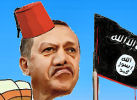 The June 7 parliamentary election in Turkey could have a huge impact on the conflict in Syria. The invincible image of President Erdogan has been cracked. There is a real chance that the election might lead to substantive change in Turkish foreign policy promoting the war in Syria. (This article first published at
The June 7 parliamentary election in Turkey could have a huge impact on the conflict in Syria. The invincible image of President Erdogan has been cracked. There is a real chance that the election might lead to substantive change in Turkish foreign policy promoting the war in Syria. (This article first published at 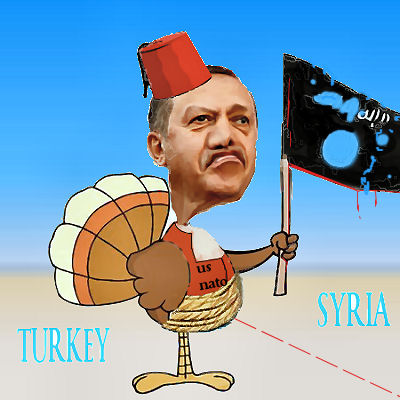
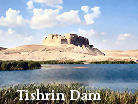 ALEPPO, SYRIA: We have received the following report, which attests to knowledge of ISIL using chlorine as a chemical weapon and controlling water supply from the Tishrin Dam on the Euphrates.
ALEPPO, SYRIA: We have received the following report, which attests to knowledge of ISIL using chlorine as a chemical weapon and controlling water supply from the Tishrin Dam on the Euphrates.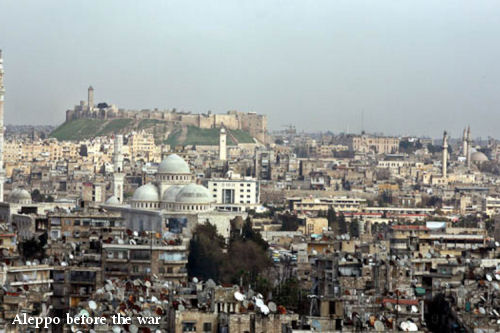
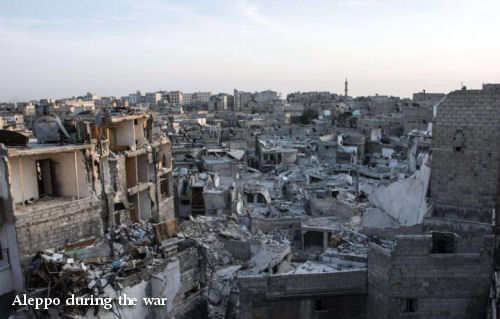
 Candobetter.net Editor: This article is about the US contribution to the radicalisation of the Middle East. In reality there is no dividing wall between the 'extremists' and 'America's supposedly moderate opposition allies'. Recently both Turkey and Saudi Arabia, which operate out of US-led command centers in Turkey and Jordan, signed a pact to coordinate support to al-Qaeda and other extremist groups in order to further attack the Syrian government.
Candobetter.net Editor: This article is about the US contribution to the radicalisation of the Middle East. In reality there is no dividing wall between the 'extremists' and 'America's supposedly moderate opposition allies'. Recently both Turkey and Saudi Arabia, which operate out of US-led command centers in Turkey and Jordan, signed a pact to coordinate support to al-Qaeda and other extremist groups in order to further attack the Syrian government.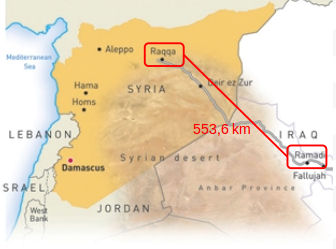
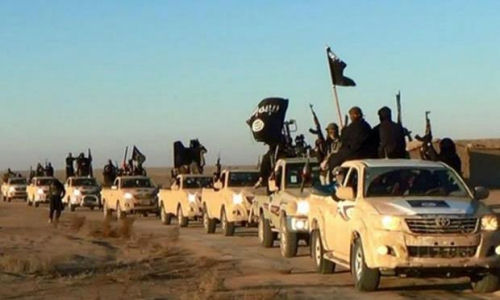
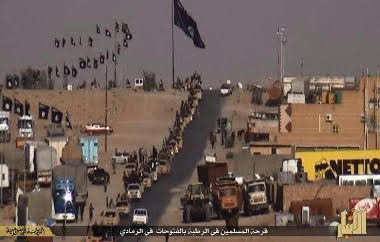
 Video-link inside. Australians now have a choice of many news services from all over the world via the internet. Many countries broadcast in English. Iranian television on-line has a continuous on-line news broadcast service in English and conducts some very topical and vivid debates. Tonight Shabbir R. Hassanally, activist and Islamic scholar in London debated Lawrence J.Korb, former US assistant secretary of defense from Washington, on the subject of who benefits from sowing the seeds of division among Muslims. The role of Turkey, Saudi Arabia and the United States vis a vis ISIS are questioned. The whole notion of 'Sunni-Shia' division is challenged. Female presenter, Kaneez Fatima, comperes. Well worth listening to if you want to hear the other side of what is served up by the ABC and SBS on the wars we support in the Middle East.
Video-link inside. Australians now have a choice of many news services from all over the world via the internet. Many countries broadcast in English. Iranian television on-line has a continuous on-line news broadcast service in English and conducts some very topical and vivid debates. Tonight Shabbir R. Hassanally, activist and Islamic scholar in London debated Lawrence J.Korb, former US assistant secretary of defense from Washington, on the subject of who benefits from sowing the seeds of division among Muslims. The role of Turkey, Saudi Arabia and the United States vis a vis ISIS are questioned. The whole notion of 'Sunni-Shia' division is challenged. Female presenter, Kaneez Fatima, comperes. Well worth listening to if you want to hear the other side of what is served up by the ABC and SBS on the wars we support in the Middle East.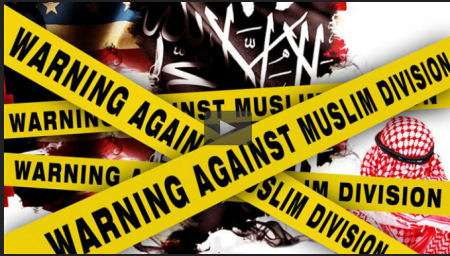
 "Where does ISIS come from and how can we stop them?" you might ask. Answering that question is easy if you just do the math. So let's find out the answer -- by simply adding up the columns of numbers listed below:
"Where does ISIS come from and how can we stop them?" you might ask. Answering that question is easy if you just do the math. So let's find out the answer -- by simply adding up the columns of numbers listed below: ISIS = American weapons and training.
ISIS = American weapons and training. 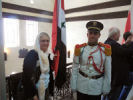 My three-month-old granddaughter has finally fallen asleep so I gotta bang this article out fast before she wakes up and I don't have a lot of time to run all this down to you ad infinitum. Thus I'm only going to explain it to you once. So listen up.
My three-month-old granddaughter has finally fallen asleep so I gotta bang this article out fast before she wakes up and I don't have a lot of time to run all this down to you ad infinitum. Thus I'm only going to explain it to you once. So listen up.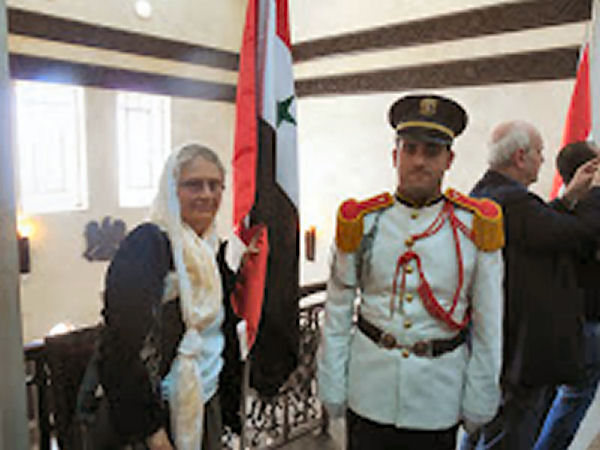 But if you really really do want to fight to protect Islam, then go to Damascus and join Assad's heroic Syrian army instead. Or go fight for Hezbollah. Or join the Houthi in Yemen. Or decry the slaughter of Muslims in Gaza. Are you pissed off at the western neo-colonialist imperialist Empire of Chaos for unjustly demonizing your religion and destroying the Middle East? Then put your freaking anger where your mouth is. Go fight against ISIS -- not for it.
But if you really really do want to fight to protect Islam, then go to Damascus and join Assad's heroic Syrian army instead. Or go fight for Hezbollah. Or join the Houthi in Yemen. Or decry the slaughter of Muslims in Gaza. Are you pissed off at the western neo-colonialist imperialist Empire of Chaos for unjustly demonizing your religion and destroying the Middle East? Then put your freaking anger where your mouth is. Go fight against ISIS -- not for it.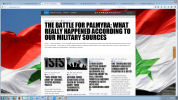 (Republished from article by Ziad Fadel on Syrian Perspective news site published at about 0100 hrs 22 May Australian time, titled, "The Battle for Palmyra: What really happened according to our military sources" at
(Republished from article by Ziad Fadel on Syrian Perspective news site published at about 0100 hrs 22 May Australian time, titled, "The Battle for Palmyra: What really happened according to our military sources" at 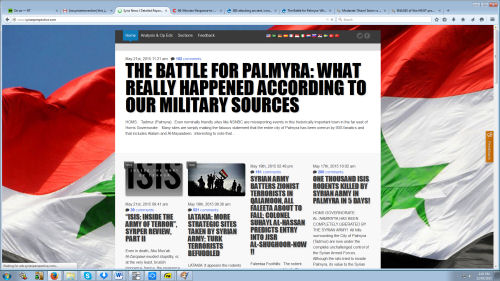
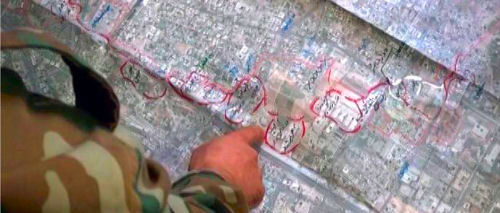
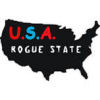 In a worrying turn of events, the US Government has refused to cooperate with Syria in dealing with ISIS and has threatened the Syrian Government if it tries to 'interfere' in the defense of its own country. Writes Patrick Martin, "What will happen if US forces come into contact with Syrian government forces during future operations like Friday’s raid? There is every reason to believe that a major purpose of such incursions into Syrian airspace and Syrian territory is to create a pretext for a direct US attack on the Syrian army and the Assad government."
In a worrying turn of events, the US Government has refused to cooperate with Syria in dealing with ISIS and has threatened the Syrian Government if it tries to 'interfere' in the defense of its own country. Writes Patrick Martin, "What will happen if US forces come into contact with Syrian government forces during future operations like Friday’s raid? There is every reason to believe that a major purpose of such incursions into Syrian airspace and Syrian territory is to create a pretext for a direct US attack on the Syrian army and the Assad government."
 Candobetter.net has been informed of an urgent call from Syria this morning to
Candobetter.net has been informed of an urgent call from Syria this morning to  For those who don't know the story of Queen Zenobia, this is a good time to read up on it. Her story is known by every Syrian. For some time, she was victorious against the Roman Empire.
For those who don't know the story of Queen Zenobia, this is a good time to read up on it. Her story is known by every Syrian. For some time, she was victorious against the Roman Empire. 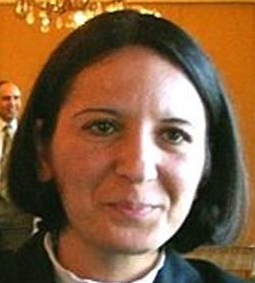
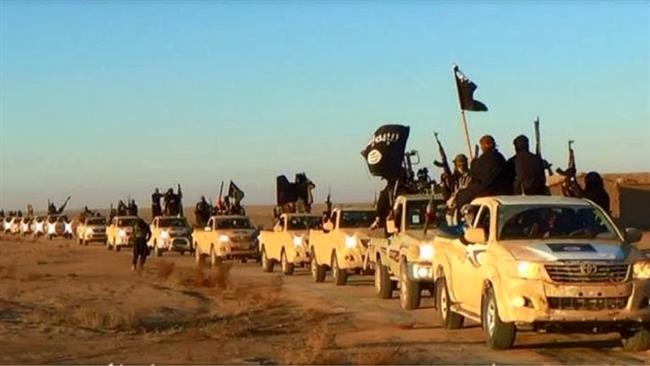
Recent comments